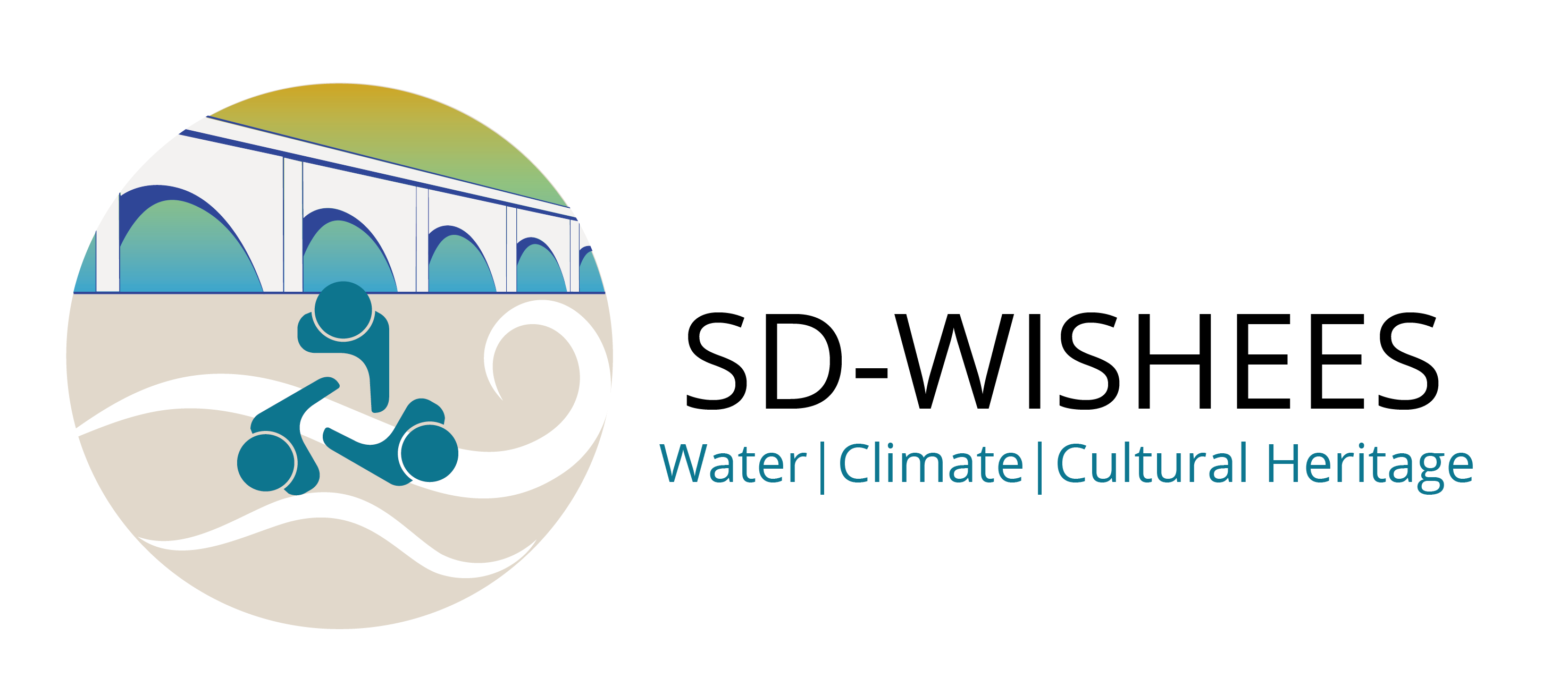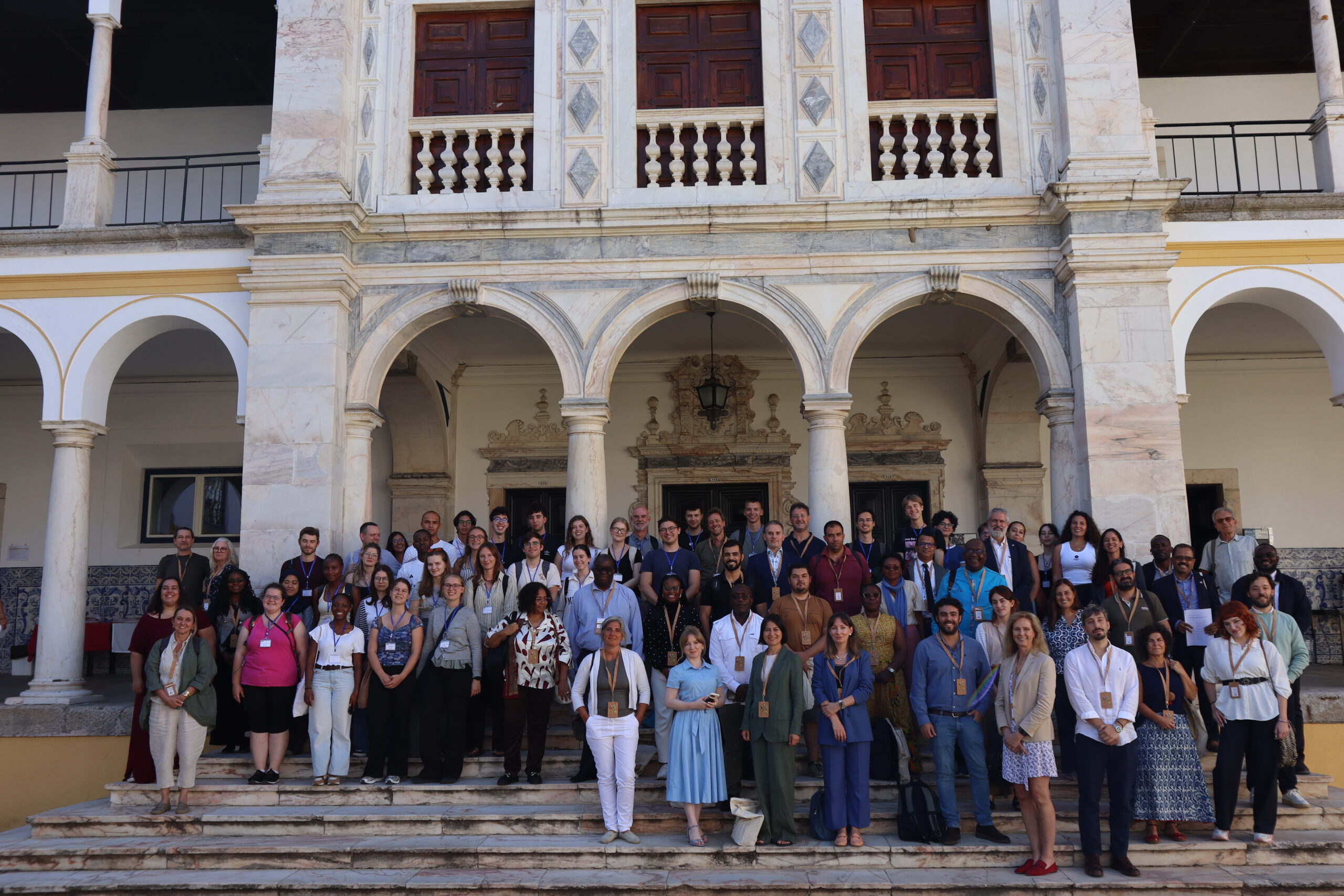
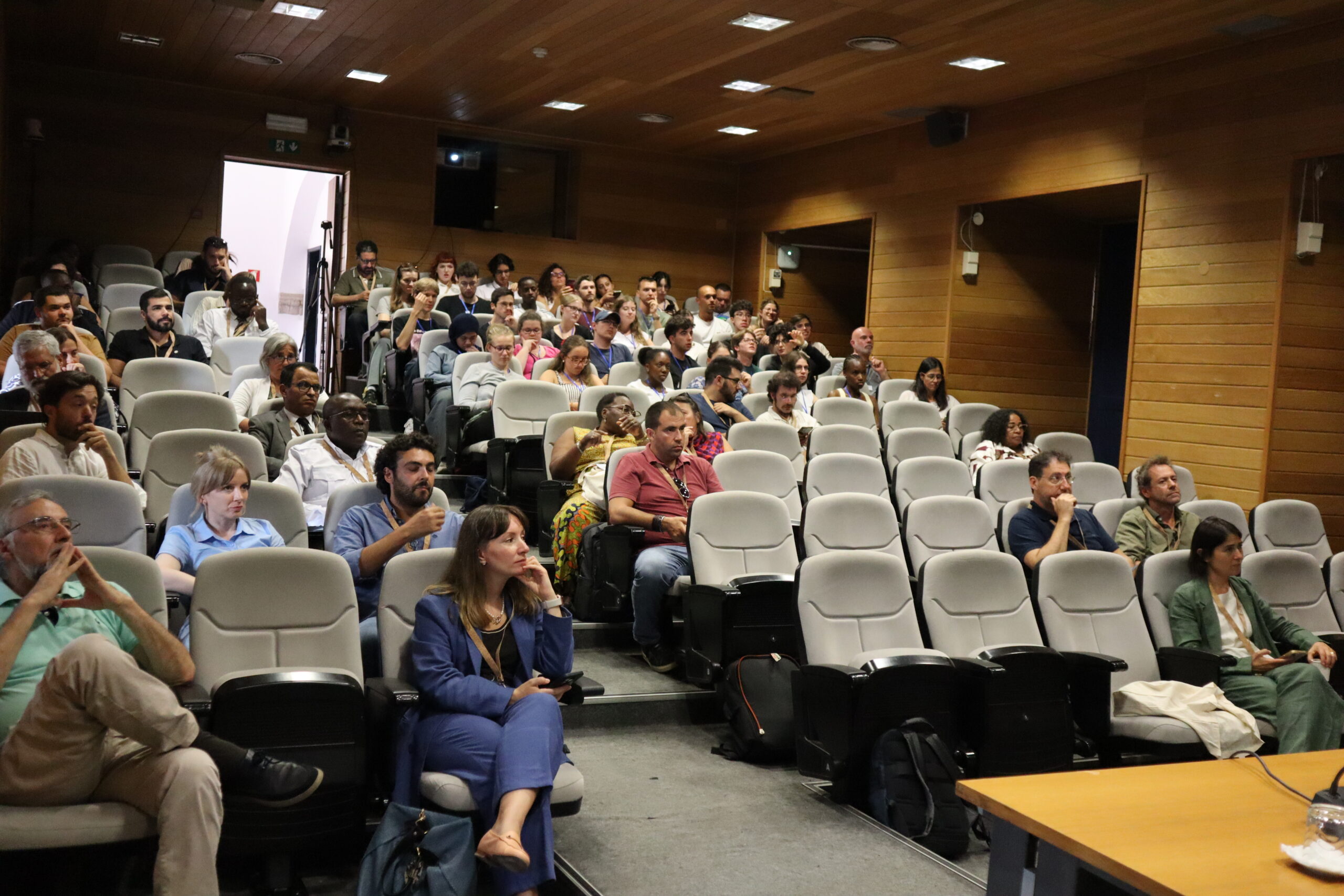
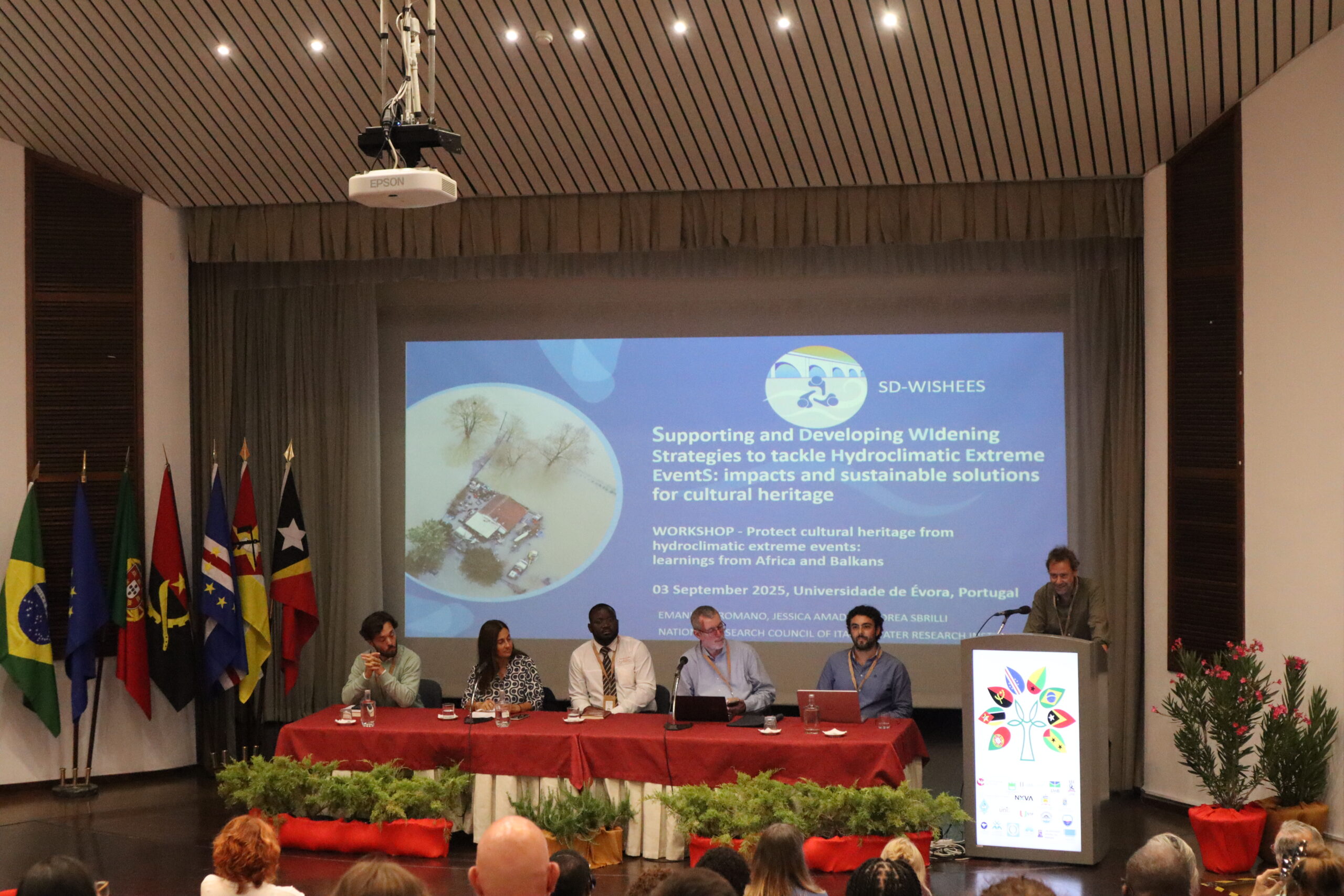
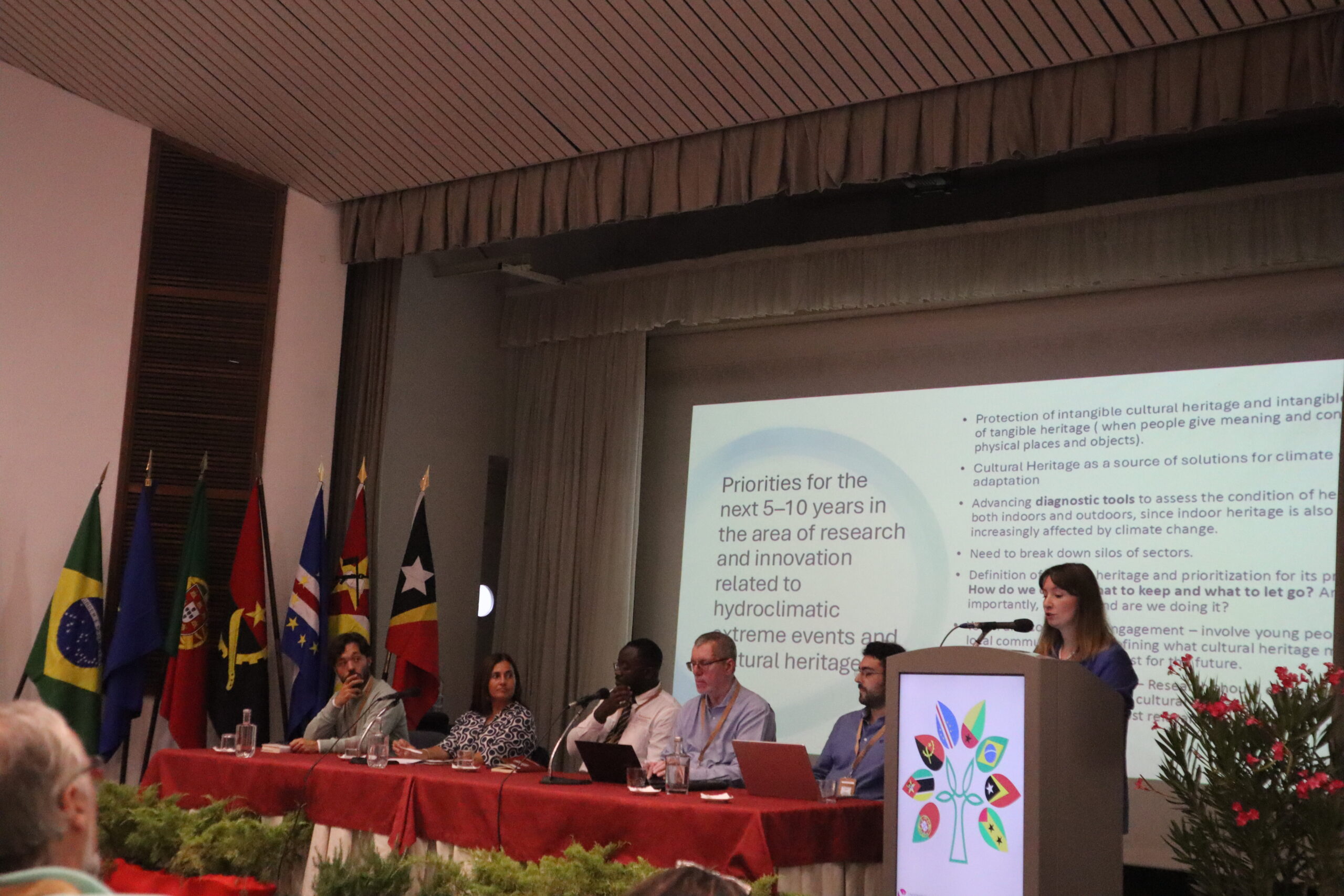
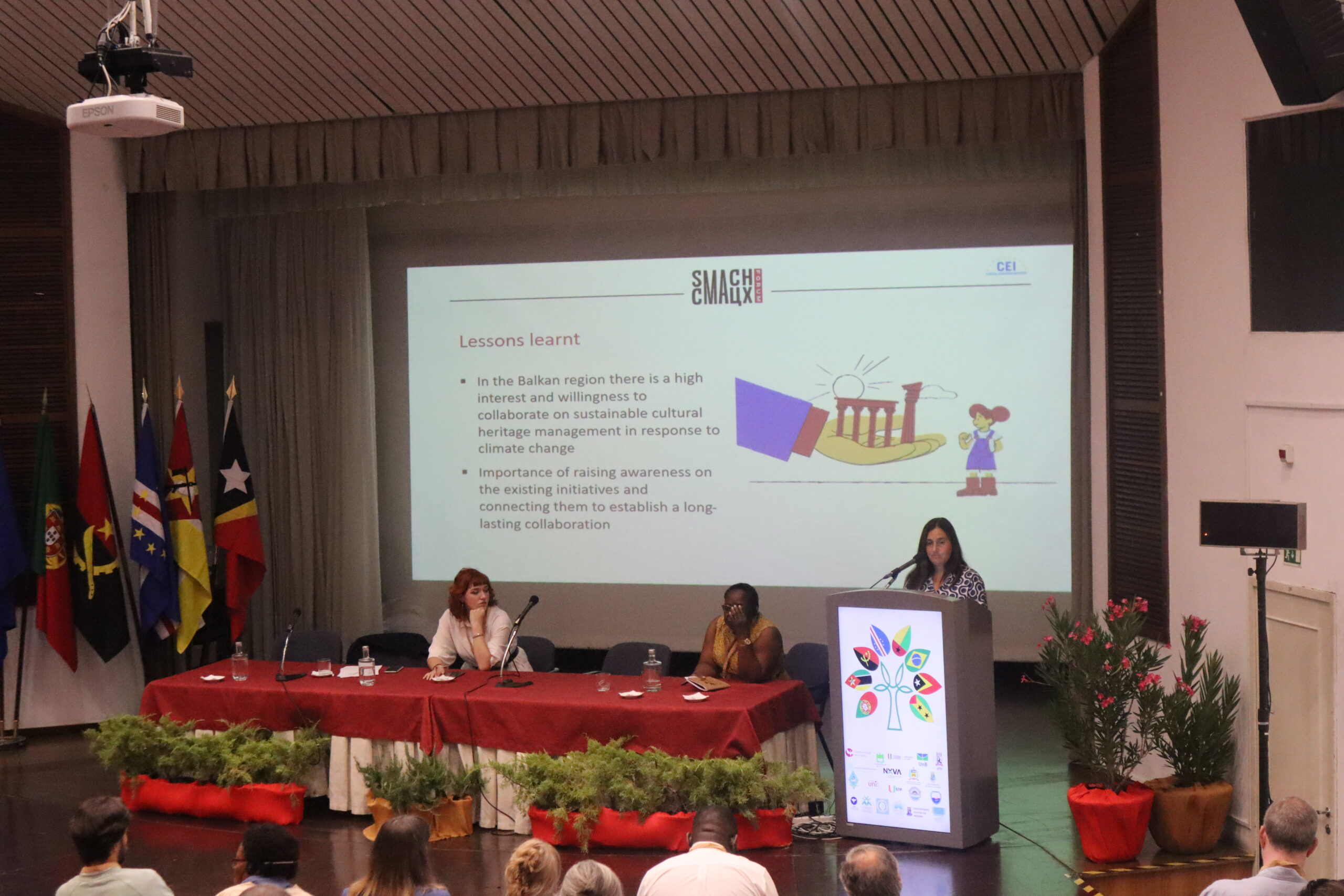
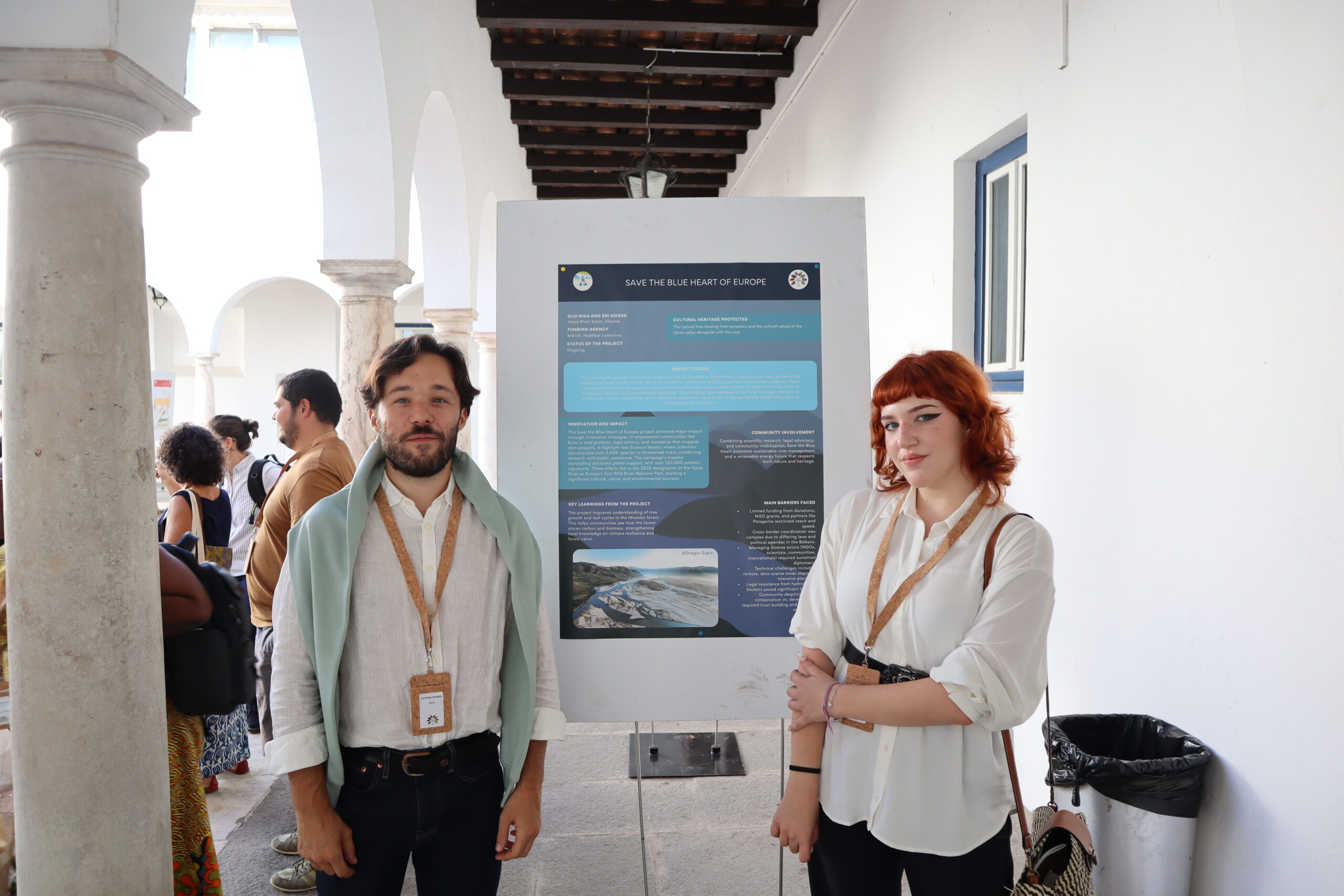
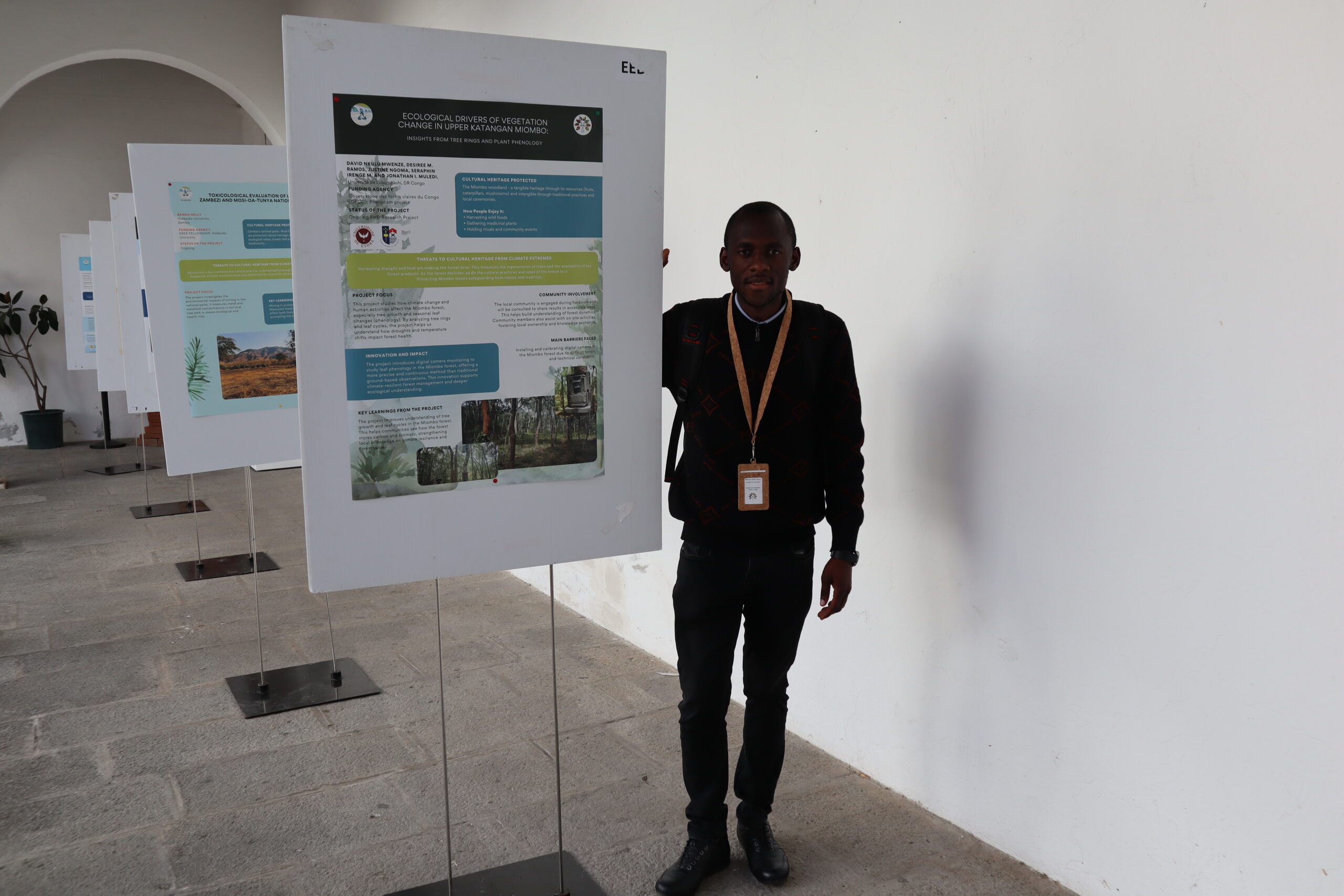
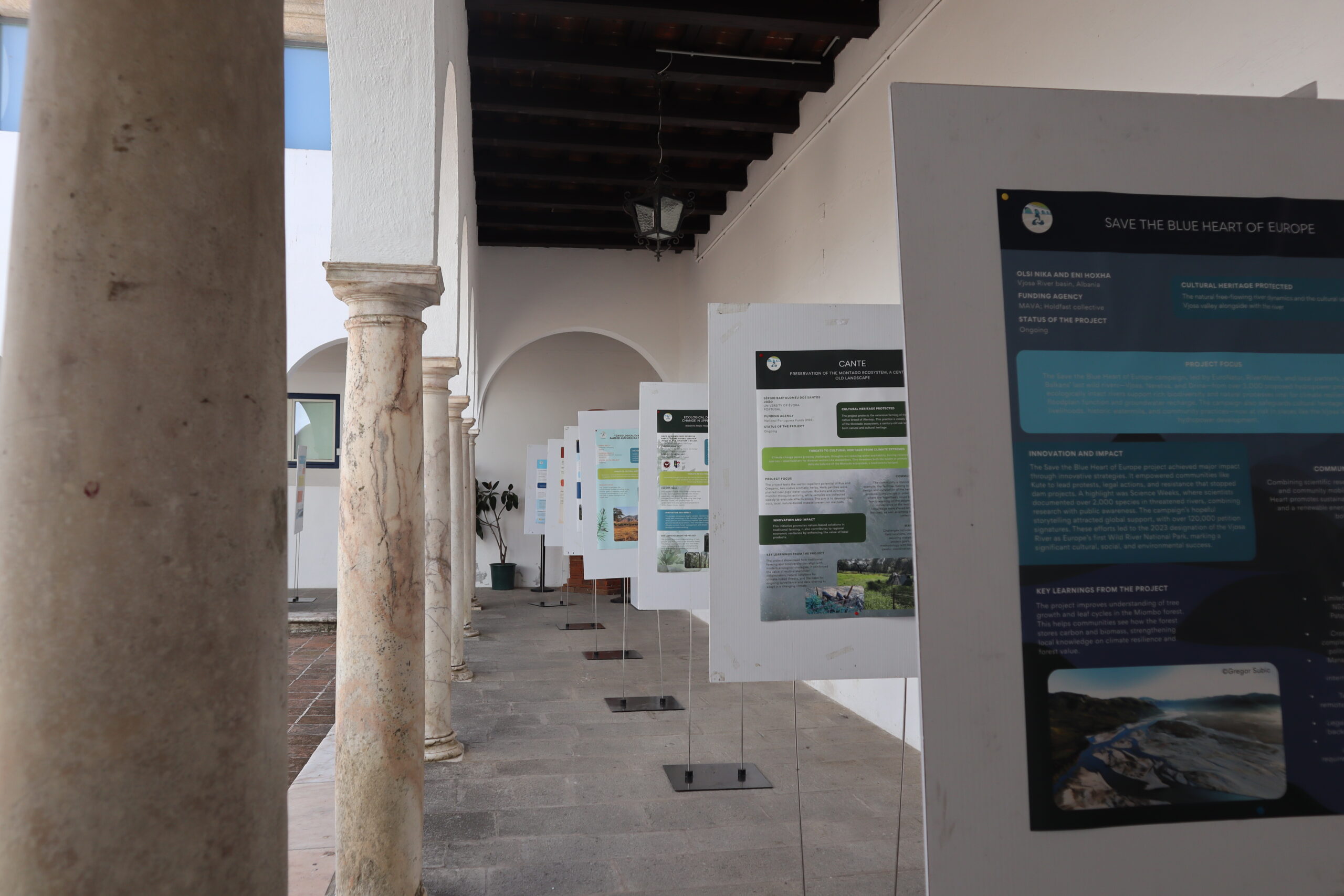
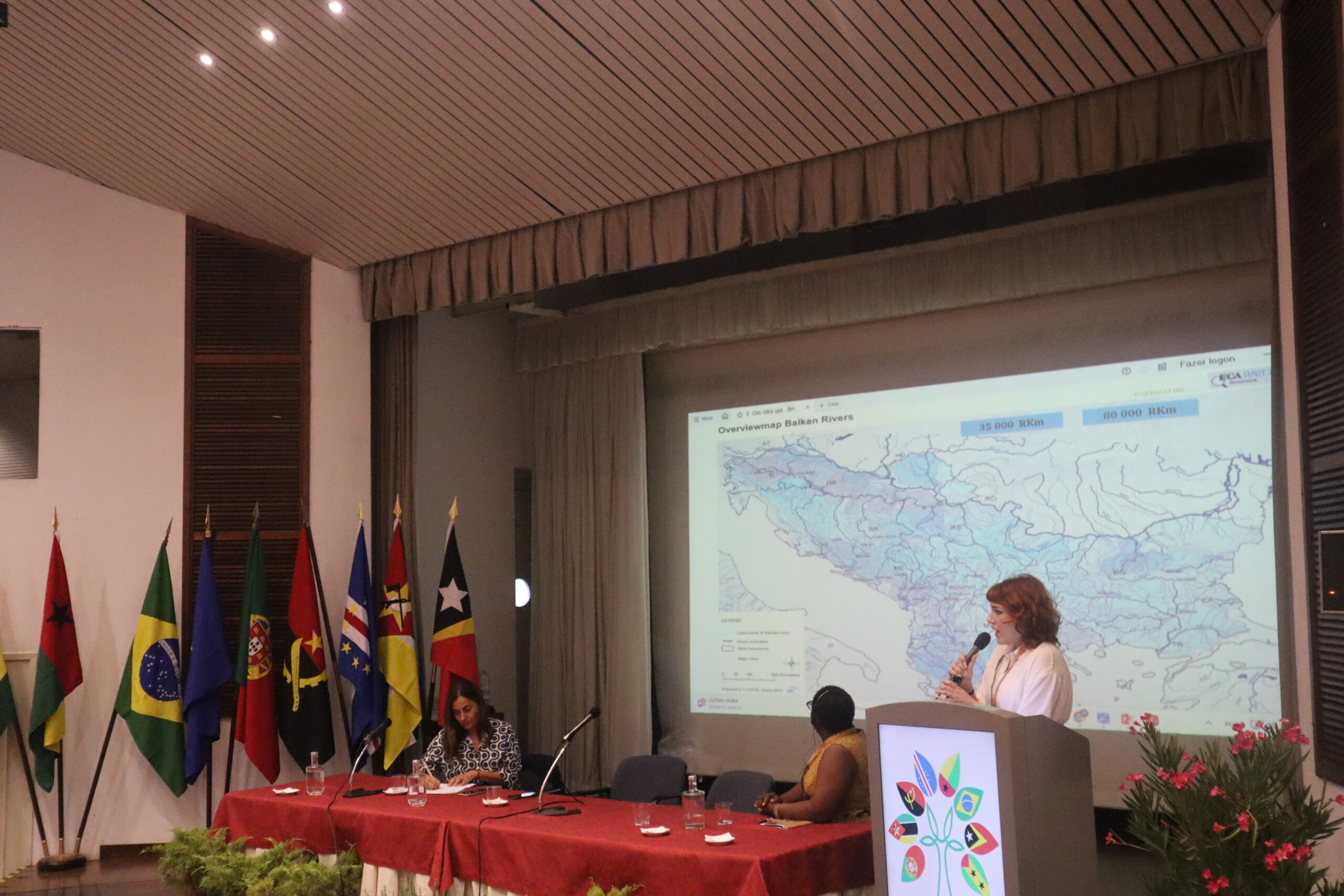
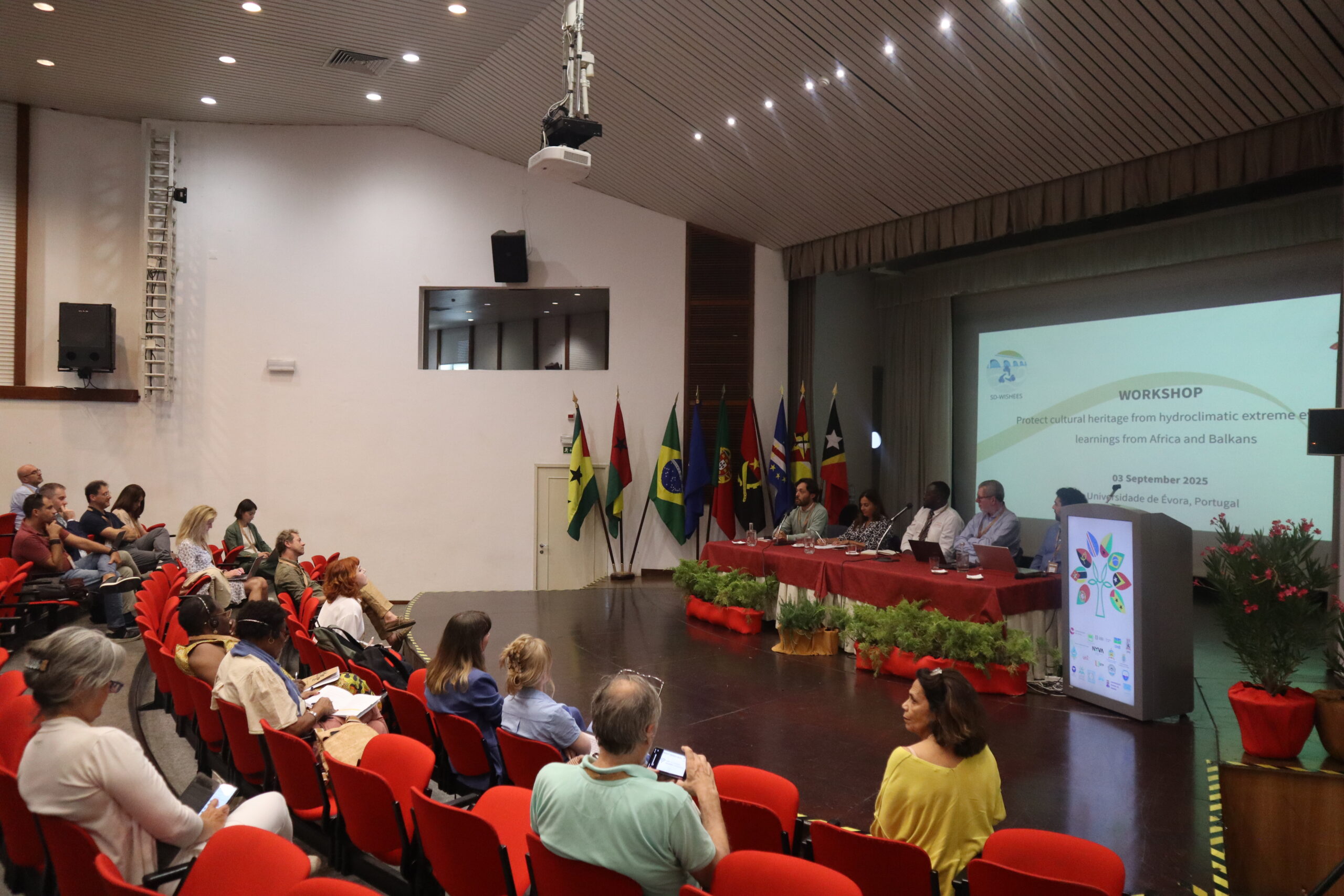
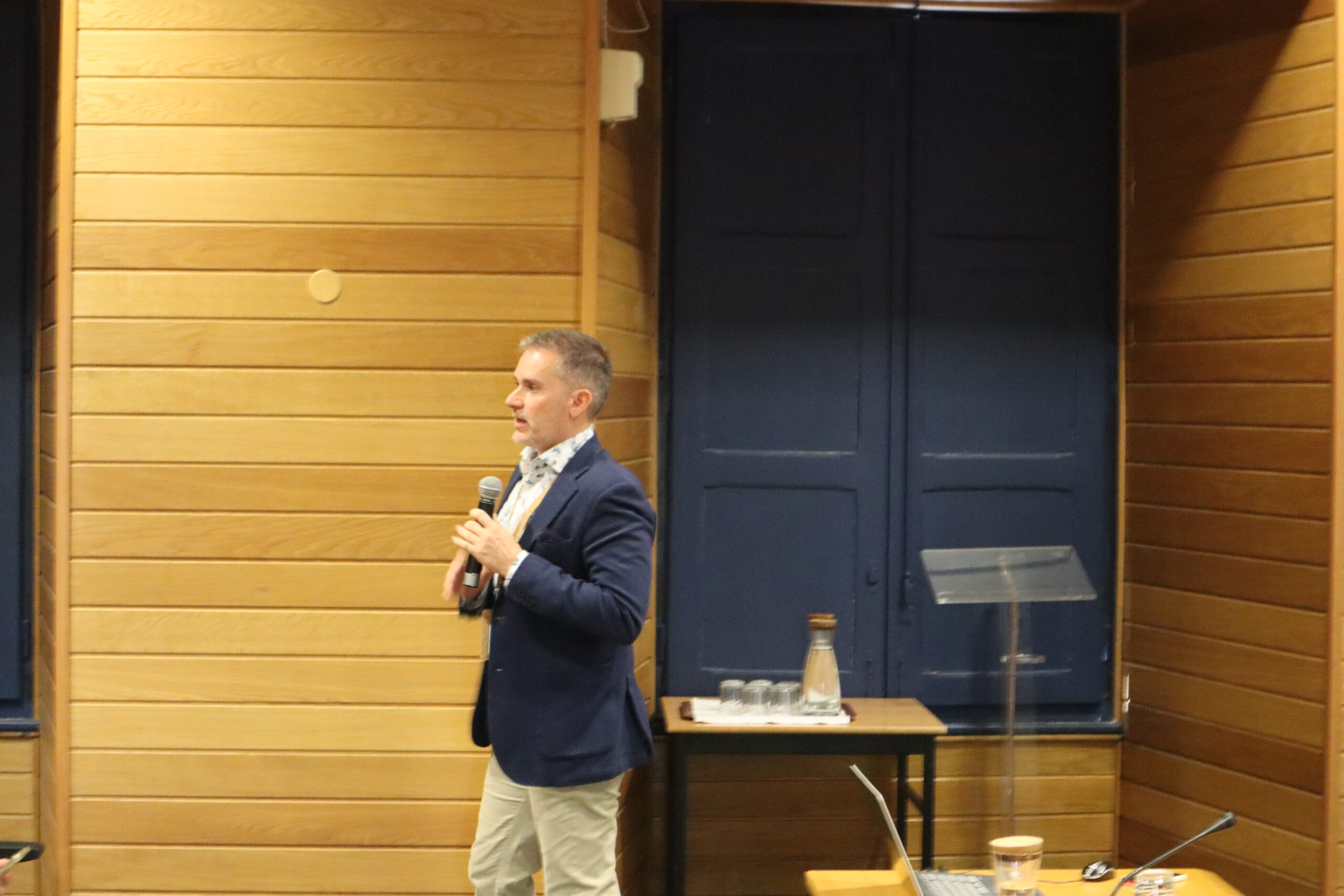

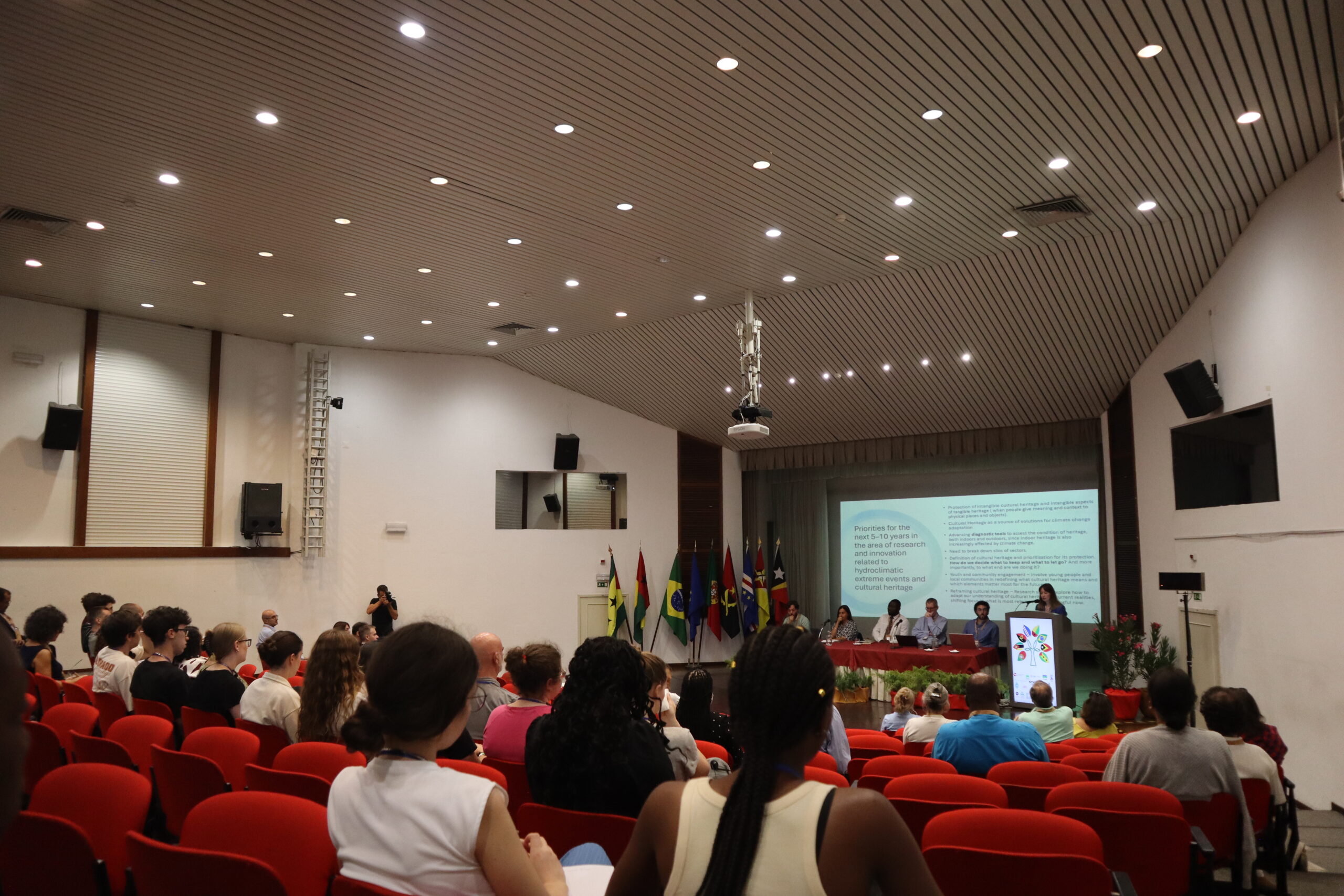
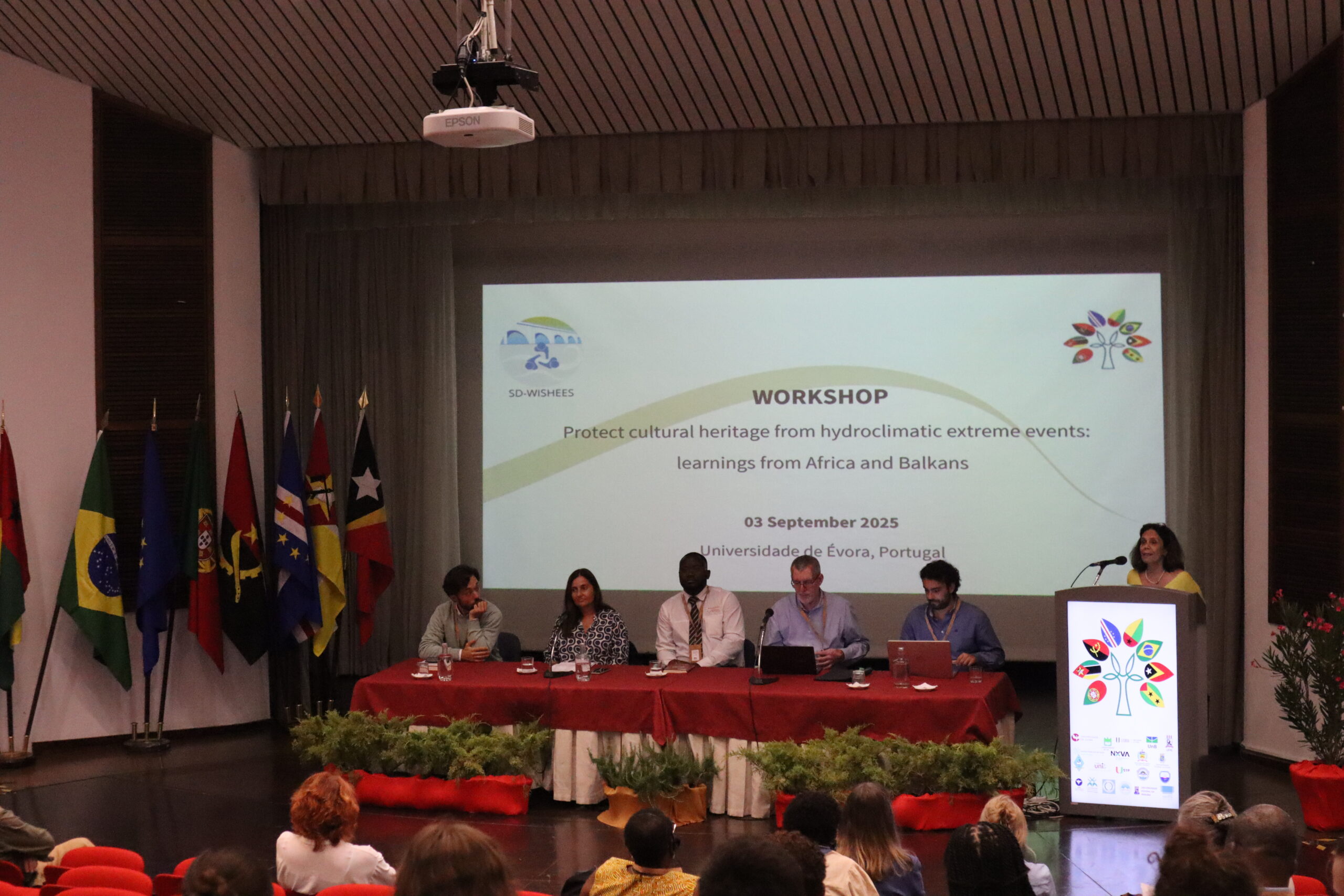
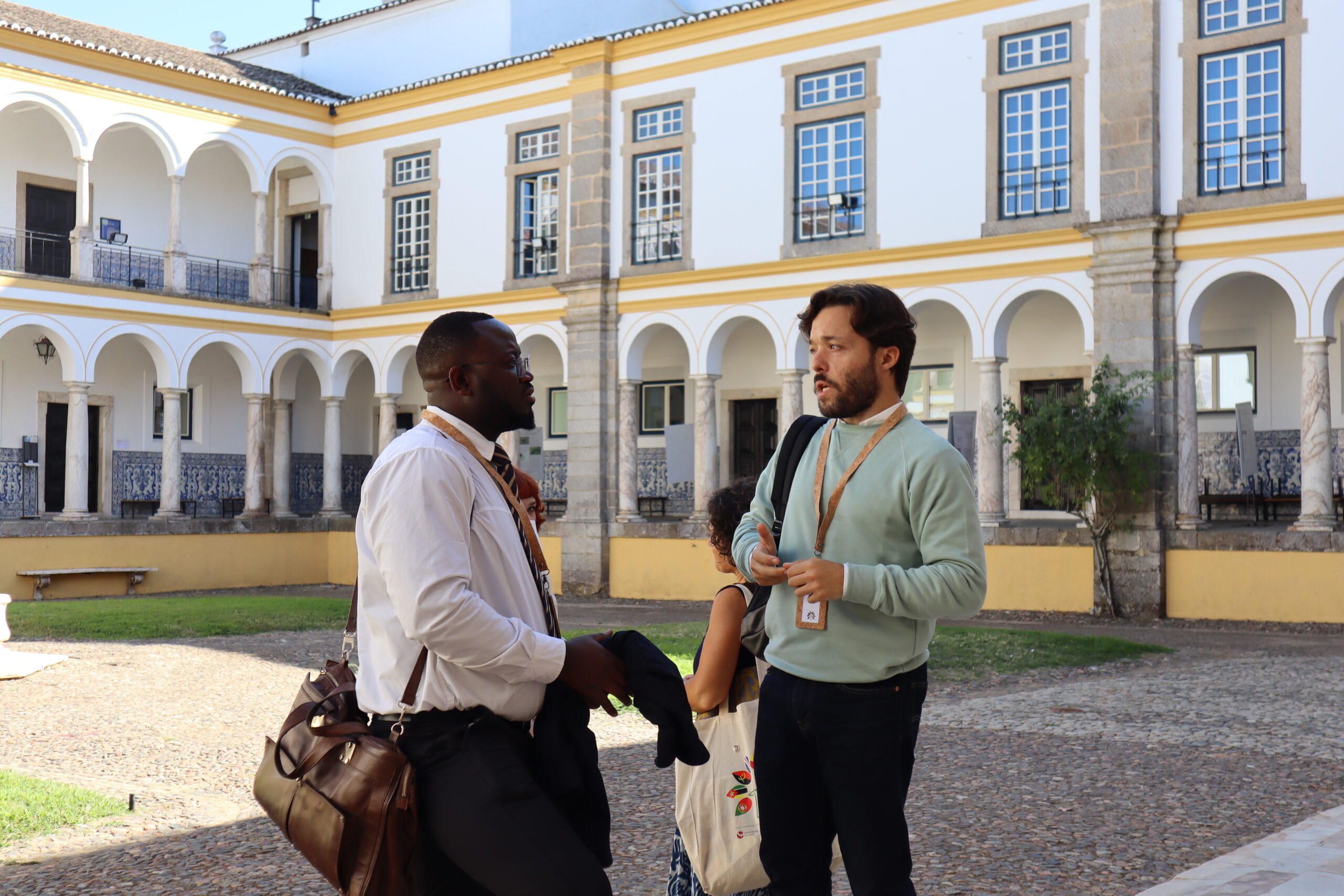

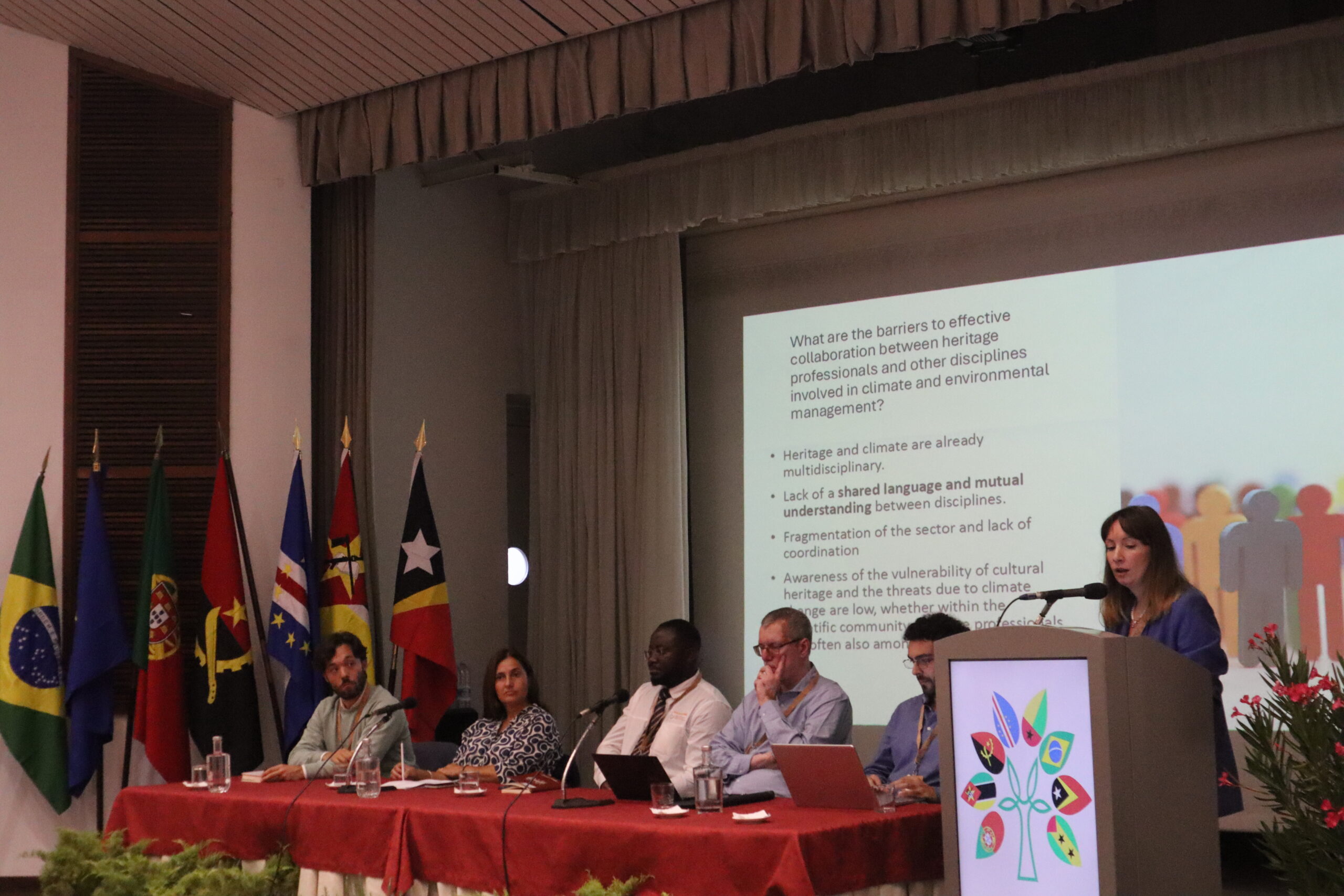
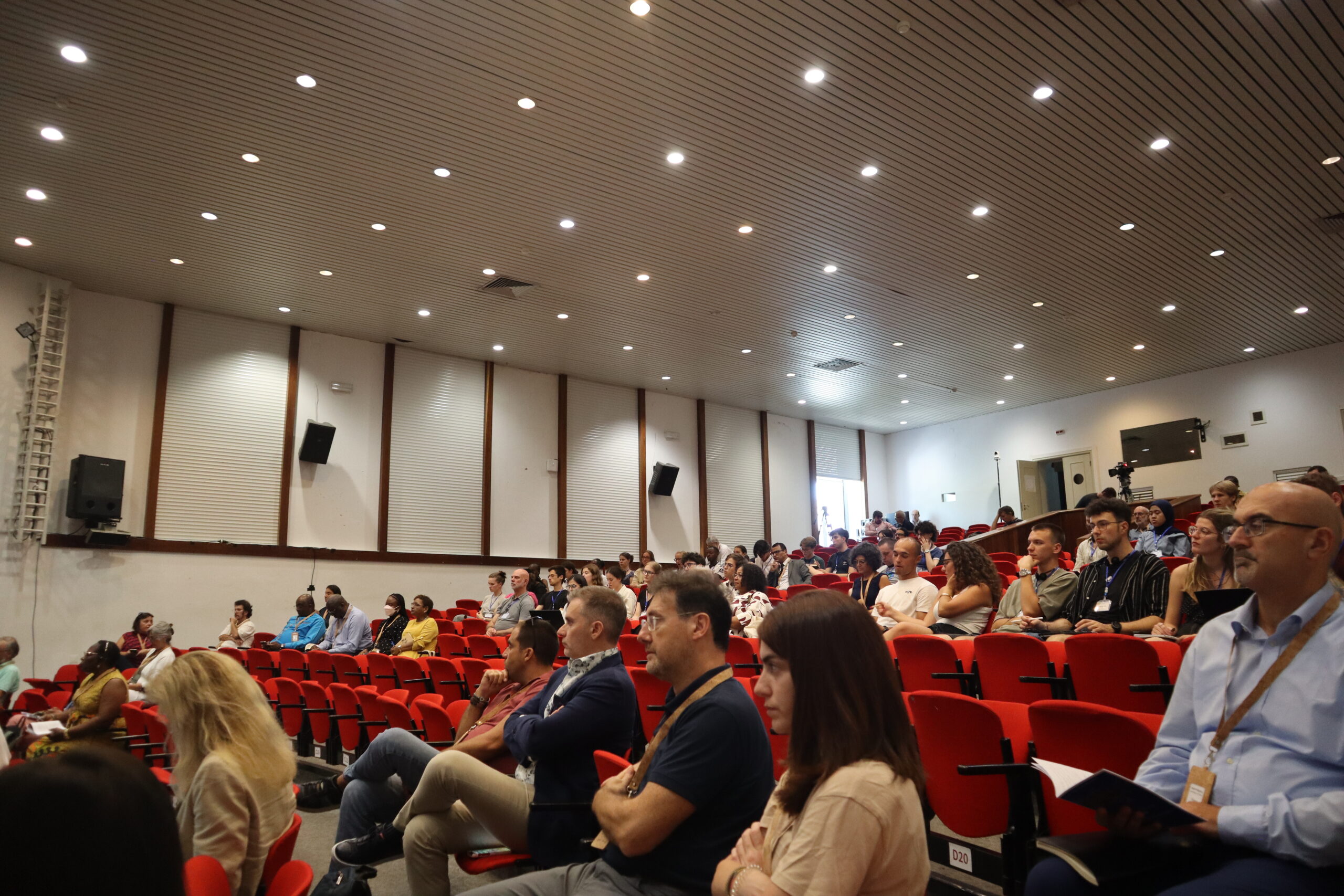
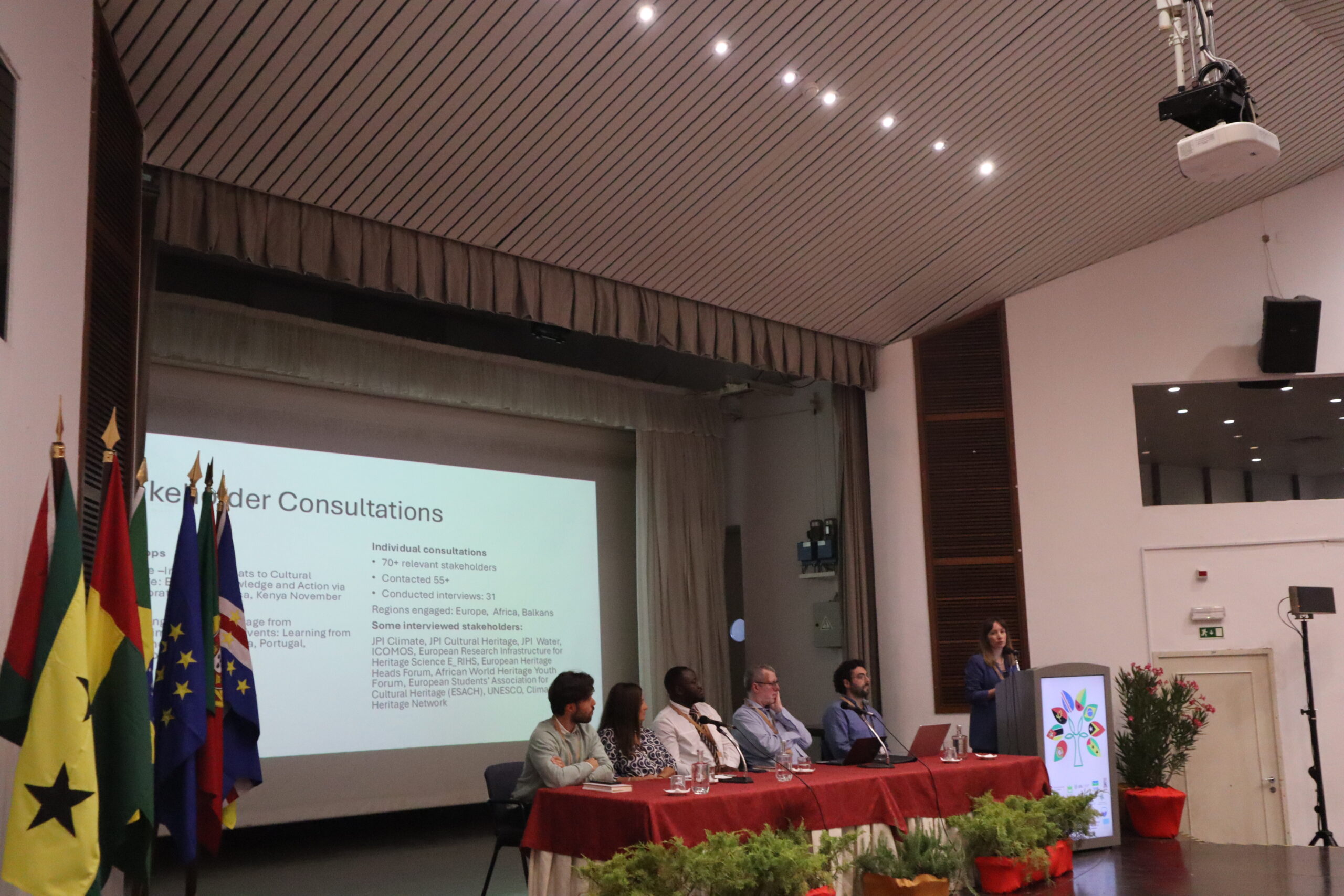
Protecting Cultural Heritage from Hydroclimatic Extreme Events: Learnings from Africa and the Balkans
On 3 September 2025, the Horizon SD-WISHEES project organized a workshop at the University of Évora, bringing together experts, researchers, community representatives, and students to explore how to protect cultural heritage from growing impacts due to climate change in the context of the Water-Climate-Cultural Heritage (WCCH) Nexus.
Organized as a side event of the XXV REALP Conference & 1st International Conference of the Erasmus+ AMIGO Project “People and Nature: Research into Sustainability” the workshop focused on practical and innovative strategies to safeguard historic monuments, archaeological sites, natural landscapes, and intangible traditions from extreme events such as storms, floods, and droughts. Participants examined how these challenges affect communities in both Europe and Africa, shared case studies from the Balkans and African regions, and identified ways to strengthen resilience through research, innovation, and cross-regional collaboration.
The day featured a rich variety of activities – from keynote presentations and panel discussions to interactive exercises, a poster marketplace, youth sessions, and breakout group discussions – all designed to encourage knowledge exchange and foster collaboration among participants.
The first part of the workshop was devoted to “Challenges in Protecting Cultural Heritage from Climate Change”, whilst the second one was dedicated to “Solutions and Innovations for Climate-Resilient Cultural Heritage”. In addition, on 4 September 2025, a joint SD-WISHEES and Water4All Youth Workshop was held to stimulate discussion on WCCH Nexus among young scientists, researchers, and students.
Challenges in Protecting Cultural Heritage from Climate Change
The Workshop began with welcoming remarks from Emanuele Romano (CNR–IRSA), Coordinator of the SD-WISHEES project, who highlighted the project’s vision to foster collaboration and knowledge exchange between Europe, the Balkans, and Africa in addressing the impacts of hydroclimatic extreme events on cultural and natural heritage.
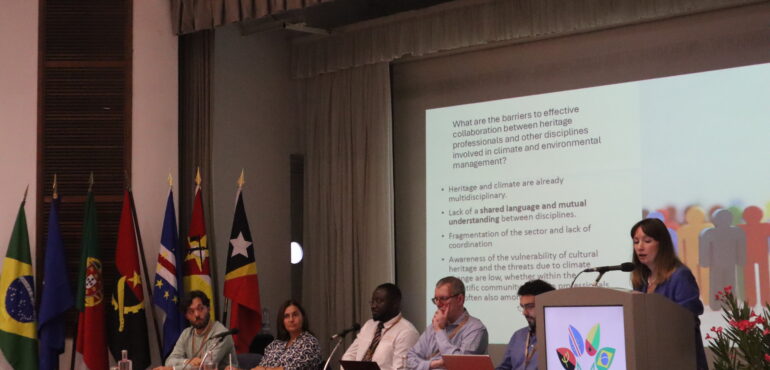
Following the introduction, Natalia Shatirishvili (WEG) from SD-WISHEES presented one of the project’s key initiatives – the development of a Roadmap on Strategic Research and Innovation Needs and Priorities to Protect Cultural Heritage from Extreme Hydroclimatic Events. The roadmap aims to identify knowledge gaps, highlight good practices, and propose practical pathways to enhance the resilience of cultural heritage to increasing climate-related risks.
Drawing on insights from the literature review, and the many stakeholders consulted through regional workshops and interviews across Europe, the Balkans, and Africa, it has been noted that cultural heritage remains largely absent from national climate policies. To further explore the reasons behind this gap and identify possible solutions, the following panel discussion was dedicated to analyzing these challenges and opportunities for stronger integration of cultural heritage into climate actions.
Panel discussion: Research & Innovation Priorities for Protecting Cultural Heritage from Hydroclimatic Extremes The panel discussion, moderated by Marco Orlando (PRIMA Foundation) from SD-WISHEES, brought together Luiz Miguel Oosterbeek (Instituto Politécnico de Tomar), Vasco Chiteculo (SASSCAL Angola Node), Ilda Mannino (Venice International University, SMACH Forum), and Lorenzo Venezia (European Students’ Association for Cultural Heritage).

Professor Oosterbeek underscored the need to look beyond climate-centric approaches and adopt broader ecosystem perspectives. He contrasted Europe’s often theoretical policy frameworks with Africa’s more practice-oriented, community-driven strategies. Mr. Chiteculo shared insights from the SASSCAL programme, highlighting how local knowledge and participation are essential for lasting results. Ilda Mannino presented results from the SMACH mapping report on the Balkans, revealing that while awareness of cultural heritage’s importance is high, technical and institutional capacity for monitoring and adaptation remains limited. Representing the next generation, Lorenzo Venezia of ESACH highlighted the vital role of youtgh engagement and digital innovation. He emphasized how emerging technologies such as AI-based predictive tools, satellite monitoring (such as, the Copernicus European Union’s Earth observation programme), and social media can help anticipate risks, raise awareness, and foster community involvement.
Across all perspectives, a shared message emerged: protecting cultural heritage from hydroclimatic extremes requires integrated, community-based, and cross-sectoral collaboration. Combining traditional knowledge with scientific innovation, empowering local actors, and strengthening cooperation between Europe and Africa are key to ensuring that both tangible and intangible heritage endure in the face of accelerating climate change.
Case Studies on Protecting Cultural Heritage
The second session presented inspiring international experiences that address the growing risks that climate change poses to cultural and natural heritage.

Eni Hoxha (EcoAlbania) from SD-WISHEES showcased “Save the Blue Heart of Europe” a campaign that mobilized scientists, artists, and local communities to protect the Vjosa River – one of Europe’s last remaining wild rivers. Through scientific research, legal action, and public engagement, the initiative successfully halted hydropower development and led to the creation of Europe’s first Wild River National Park in 2023.
From Venice International University, Ilda Mannino, coordinator of the SMACH Forum, described how the Forum builds on the earlier SMACH project, a Central European Initiative “Know-how Exchange Programme” promoting sustainable management of cultural heritage in the Balkans.
Maria Nazaré Ceita, from the Instituto Superior Politécnico – Universidade de S. Tomé e Príncipe, presented the study “The Threats and Impacts of Risks on the Natural and Coastal Heritage of the City of São Tomé”, which highlighted the vulnerability of coastal heritage to sea-level rise and extreme weather, and called for integrated approaches linking adaptation, cultural preservation, and community resilience.
Together, these presentations demonstrated how diverse approaches—from river conservation in Europe to coastal protection in Africa—are redefining how cultural and natural heritage can be safeguarded in a changing climate.
Interactive session: Best Practices to Address and Reduce the Impacts of Extreme Events on Cultural Heritage

Another highlight of the workshop was an interactive session led by Stefano Mariani (ISPRA) from SD-WISHEES, focused on collecting participants’ views and best practices for addressing and reducing the impacts of hydroclimatic extremes on cultural heritage. Using live polling, the session engaged 59 participants from across Europe, the Balkans, and Africa, achieving an impressive average response rate of 87%.
Results revealed a strong consensus on the importance of community engagement, knowledge sharing, and international cooperation. Participants highlighted actions such as sharing experiences and best practices, improving monitoring and modelling, and raising public awareness to strengthen mitigation policies.
A word cloud created during the session captured the values most associated with heritage protection – identity, history, community, tradition, and cooperation – reflecting a shared vision that protecting cultural heritage means preserving both memory and meaning for future generations.
Solutions and Innovations for Climate-Resilient Cultural Heritage

Poster Marketplace
A highlight of the conference was the Poster Marketplace: Protecting Cultural Heritage from Hydroclimatic Extreme Events, an interactive exhibition showcasing innovative case studies from Europe, the Balkans, and Africa. The session featured 22 case studies, including examples from Portugal, the Democratic Republic of Congo, Zambia, Togo, Kenya, Cabo Verde, Angola, Norway, and other countries. Several projects originated from TAP Actions under SD-WISHEES, demonstrating solutions for climate adaptation, sustainable management, and heritage protection.
The Poster Marketplace was organized following a call for case studies announced by SD-WISHEES several months before the Workshop, inviting contributions from different regions. The call encouraged participants to share innovative and replicable approaches to safeguarding natural, tangible, and intangible heritage from hydroclimatic extreme events. During the event, the Marketplace provided a vibrant space for dialogue among experts, researchers, and students, fostering the exchange of ideas, sharing good practices, and the creation of new partnerships for future collaboration.

Interactive Session – Solutions & Ways Forward: Strengthening Collaboration through Research and InnovationThe final session of the workshop featured four breakout group discussions, moderated by four facilitators, allowing participants to exchange ideas and propose solutions on how research, policy, and community engagement can better protect cultural heritage from hydroclimatic extreme events. Breakout groups provided an enthusiastic contribution to be made from around 60 participants, providing a setting for creative and helpful ideas. There was a strong youth contingency in the groups, including 30 students from the Water4All 360 Youth programme.
Key insights emerged across several themes. Participants called for policy research to address land use, ownership, and governance issues that often complicate heritage protection, emphasizing the need for integrated approaches that restore ecosystems while respecting local rights.
Discussions, once again, highlighted the importance of community empowerment and awareness-raising, noting that many people remain unaware of how climate change affects cultural heritage. The main youth-led group were particularly keen to find ways to attract young people and students to the topic of the nexus between climate adaptation and cultural heritage. While most were coming from a scientific field, they were intrigued by the need to gear engineering towards achieving cultural ends.
Participants agreed that both fundamental and applied research are needed – from mapping risks and documenting past events to developing educational initiatives that link local knowledge with academic expertise. They stressed that people often feel powerless in the face of climate threats, and that building connections between communities, researchers, and institutions is essential to translate awareness into meaningful action.
The breakout groups concluded that the protection of cultural heritage requires not only technical solutions but also inclusive policies, creative education, and long-term collaboration among youth, scientists, and decision-makers.
Youth Workshop: Exploring the Water-Climate-Cultural Heritage Nexus
Led by Amanda Loeffen (Human Right 2 Water), from SD-WISHEES, the joint SD-WISHEES and Water4All Youth Workshop at the Évora Conference explored how young scientists and students view the Water-Climate-Cultural Heritage (WCCH) Nexus.

Around 30 students from energy, environment, engineering, and biology backgrounds shared their ideas after a week of learning and collaboration. Many showed strong interest in the WCCH Nexus, particularly in hydroclimatic events (62%), nature-based adaptation (52%), and cultural heritage preservation (31%). Multiple selections were possible, as participants could indicate more than one area of interest.
Participants highlighted key challenges, including limited funding, short-term political thinking, and a lack of urgency, but also offered solutions such as more training opportunities, youth exchange platforms, and better visibility for young voices in research and policy.
Creativity emerged as a recurring theme, with students proposing to introduce the WCCH Nexus early in education through schools, art, and social media. Their energy and insight demonstrated that young people are ready to drive cultural heritage protection as part of global climate action.

©2025 CNR, All Rights Reserved.
